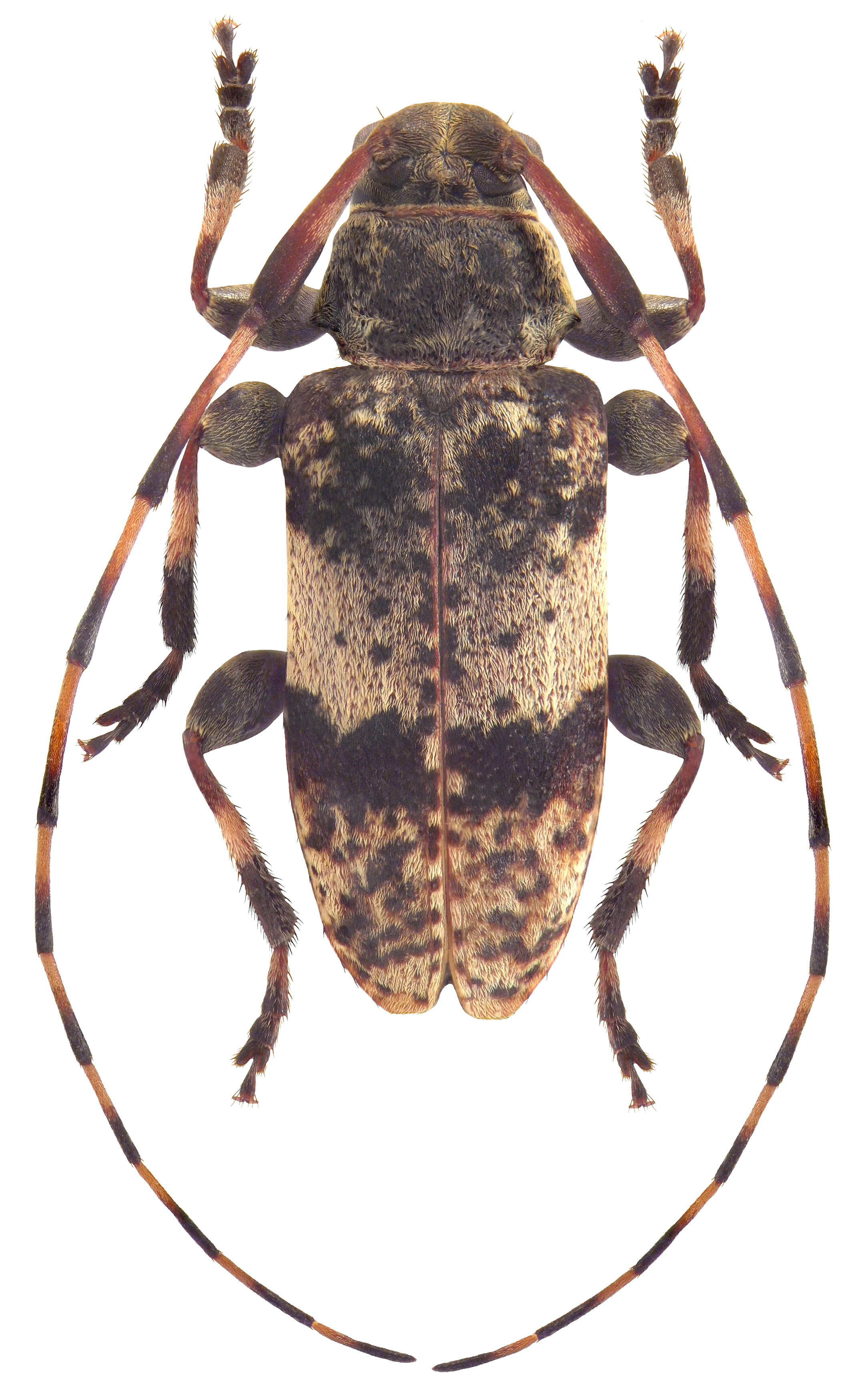Leiopus nebulosus, a common highly variable European species, has been described from Gotland (Sweden) as Cerambyx nebulosus by Carl Linné in 1758 [▽].
However, for 250 years, it was probably often mistaken for its sibling, L. linnei, described by Henrik Wallin, Ulf Nylander and Torstein Kvamme
in 2009 [❖]. Both species differ in combination of characters, including the male genitalia and female spermathecae. Leiopus linnei appears to be common in central Europe and
is here also probably more anbundant then L. nebulosus, which is predominantly recorded from coastal areas of Europe.
L. linnei and L. nebulosus are very similar morphologically and their identification is difficult and possible only by experienced taxonomists.
For this reason, a supporting determination method these two species based on hind wings measurements was developed and published by Robert Rossa, Jakub Goczał
and Adam Tofilski in 2017 [✧].
L. nebulosus is a highly polyphagous species inhabiting deciduous and mixed forests, parks and orchards. Development of larvae under the bark (or even in the bark) of standing dead or
uprooted trees, felled wood, in branches left after harvesting, etc. It attacks wood of various diameters from thin branches to thick trunks, prefers damper wood in the shade.
If the larva developed in wood with a thin bark, the pupal cell is usually placed shallow in the wood. If the bark is thick, the pupal cell is shallowly bored on the surface of the sapwood and
surrounded by a circle of wood chips, or pupation takes place directly in the bark. Adults, active from May to August, are crepuscular and nocturnal, but can be found also during day on logs,
dead and felled trees or pruned branches [❄].
| Body length: | ♂♂ 5.0–9.2 mm / ♀♀ 6.4–9.5 mm |
| Life cycle: | 1 year |
| Adults in: | May - August |
| Host plant: | polyphagous in deciduous trees (Fagus, Quercus, Carpinus, Juglans, Acer, Ulmus, Betula, Salix, Prunus) |
| Distribution: | Austria, Czech Republic, Estonia, France, Germany, Ireland, Italy, Latvia, Netherlands, Norway, Poland, Russia, Serbia, Slovakia, Sweden, Ukraine |
The depicted beetle was collected in Selbitz environs (Hof district, Upper Franconia, Bavaria, Germany) on May 15, 2005.
Collected by Udo Schmidt
[▽]
Linné C.:
Systema naturæ per regna tria naturæ secundum classes, ordines, genera, species, cum characteribus, differentiis, synonymis, locis.
Systema naturae (Editio 10) Laur. Salvius, Holmiae 1: 824pp [page 391], 1758.
[download  ]
]
[❖]
Wallin H., Nylander U. and Kvamme T.:
Two sibling species of Leiopus Audinet-Serville, 1835 (Coleoptera: Cerambycidae) from Europe: L. nebulosus (Linnaeus, 1758) and L. linnei sp. nov.
Zootaxa 2010: 31-45, 2009.
[download  ]
]
[✧]
Rossa R., Goczał J. and Tofilski A.:
Hind wing morphology facilitates discrimination between two sibling species: Leiopus nebulosus and L. linnei (Coleoptera: Cerambycidae).
Zootaxa 4227 (2): 266-278, 2017.
[download  ]
]
[❄]
Sláma M.E.F.:
Tesaříkovití – Cerambycidae České republiky a Slovenské republiky / Cerambycidae of the Czech Republic and Slovak Republic.
Milan Sláma private printing, Krhanice, 383pp [pages 302-303], 1998 [ISBN: 80-238-2627-1].
[download  ]
]


